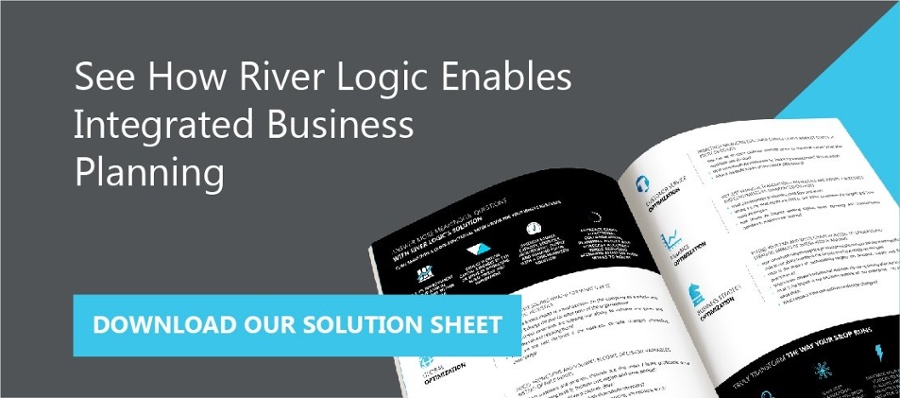Both refer to aspects of an organization's overall planning process, and their outcomes are, to an extent, linked. However, they differ in terms of function, purpose, detail, and planning horizons. To understand how these processes relate, it's first necessary to appreciate their differences before considering how information feeds from one level of planning into the other.
Levels of Organizational Planning
Organizational planning is divided into three broad categories:
- Strategic planning: Long-term planning that determines in broad conditions the organization's goals, purpose, and strategy.
- Tactical planning: Medium-term planning that determines how the organization intends to conduct its business over the foreseeable future, usually measured in terms of an annual budget.
- Operational planning: Detailed short-term planning that determines, in specific and measurable terms, how the organization intends to meet its revenue and production goals.
Each level is naturally linked. For example, the strategic plan of a manufacturing company may envisage goals to achieve a certain production volume, revenue and level of profitability over an extended period of time. Its tactical planning determines how the organization intends to achieve those goals with clearly defined medium-term targets for overall production volumes, revenue and profitability. The operational plan finalizes exactly how these goals will be achieved in terms of actual planned production volumes, sales and revenue.
Planning Horizons
Each level of planning operates over a different time horizon determined by the type of organization.
- Strategic planning time horizon: In most instances, the period considered in strategic planning would be anything between two to 10 years. Fast-moving consumer goods companies may need a shorter strategic planning time horizon, while automobile manufacturers that invest significant capital in their operations would need to consider longer-term time horizons, such as five to 10 years.
- Tactical planning time horizon: In most instances, a tactical planning time horizon would cover the next annual budget period, although in some instances it may be somewhat longer.
- Operational planning: The period typically covered by operational planning would cover the present up to approximately three months ahead. These plans are specific and detailed, describing exactly what is to be produced at each workstation and production line.
What Is S&OP and IBP?
Sales and Operational Planning (S&OP) is a tactical planning exercise that bridges the gap between the organization's strategic planning process and its operational plans. As originally envisaged, sales and operational planning brought together procurement, manufacturing, logistics and sales to manage and determine medium-term sales and marketing strategies. Meetings are typically held on a monthly basis and more effectively integrate activities to manage and drive sales over the next six to 12 months. S&OP planning is usually driven from a sales perspective and managed by the chief supply officer. Typical KPIs would include:
- Sales forecast accuracy
- Percentage on-time deliveries achieved
- Order cycle time
- Inventory turns
- Capacity utilization
Integrated Business Planning (IBP) takes the S&OP process a step further by introducing finance and other crucial departments in the process. The key differences between S&OP and IBP include:
- IBP is often managed by CEO or CFO, S&OP by CSCO
- IBP measures performance in financial terms, S&OP in units
- IBP determines the financial cost of business decisions, S&OP does not
- IBP integrates with the organization's business and financial strategy, S&OP aligns with sales objectives
Typical IBP KPIs are expanded to include financial measures such as revenue, profitability, and return on investment with a focus on aligning future sales and production with the organization's annual budget.
What Does Production Planning and Scheduling Entail?
Production scheduling, often also called production planning and scheduling, is an operational exercise focused on managing manufacturing production over the short-term, generally for the next week, month or at most three months. It's a detailed process often supported by ERP and MRP2 software and represents the exact production plan for the next period right down to the number of units produced on each line per day. Functions involved include:
- Procurement: Sources supplies and raw materials
- Logistics: Manages raw material stocks and distributes to production lines when required
- Production: Manufactures according to the plan
- Distribution: Holds finished goods at suitably located warehouse facilities
- Sales: Provides sales and order information
KPIs would include:
- Manufacturing volumes
- Quality statistics
- Sales
- Adherence to manufacturing plan
- Sales and production costs
Production scheduling is a high intensity, fast-paced process driven by operations personnel on the front line. Its primary focus is meeting production plans and delivery targets.
How Do These Different Forms of Planning Relate?
The primary link between S&OP or IBP and production scheduling is that one forms the basis for the other. While S&OP and IBP planning represent a rolling forecast of future sales and production volumes over the next three to 12 months, production scheduling represents the detailed implementation of that plan for the immediate future, usually for the next week or month.
As already indicated, time horizons vary depending on the industry as well as its S&OP maturity. What often happens, however, is the S&OP execution loses sight of its goal to plan the future and gets bogged down by short-term production issues. It's in these situations that the boundaries between S&OP, or IBP, and production scheduling can become blurred.
Differences in Planned Outcomes
While production planning and scheduling deals with detailed planning requirements down to individual product, as well as machine and production line level, effective IBP takes a much broader view, focusing on operational performance of the entity as a whole.
The outcome of a production scheduling process is a detailed, line-by-line, product-by-product plan for the next few weeks or months. Production planning is a complex exercise involving a great deal of detail, often involving hundreds or thousands of parts and components, each of which must be made or supplied just at the right time so that final assembly proceeds smoothly.
IBP usually takes a much broader approach, focusing on the big picture, although it's essential that these processes make allowances for the complexity of the production process to avoid producing an unworkable plan. A well-thought out IBP that integrates all elements of the business into one workable plan is crucial for organizational success.
Common Challenges That Can Be Solved by Advanced Analytics
IBP and production scheduling both rely on some form of business modeling. In the case of IBP, the model must reflect how the organization as a whole functions. This model may exist in many forms, such as in ERP, on spreadsheets or in a business modeling program. Similarly, production scheduling requires a detailed model of a particular production facility that's usually represented in spreadsheets, ERP, MRP or a similar production planning program.
A vital step in all planning processes is the ability for planners to consider trade-offs, evaluate what-if scenarios and determine optimal outcomes. While this degree of functionality doesn't exist in most planning solutions, it is possible if models are developed using prescriptive analytics software. Whether for IBP or for production planning and control, the approach is similar in that a mathematical model is prepared which emulates exactly how the business operates. For production scheduling, the model is highly detailed, whereas for IBP, it must accurately represent broader business aspects and need not necessarily have the same level of detail. In both instances, prescriptive analytics modeling allows planners to determine optimal solutions that improve efficiency, reduce cost and increase profitability.








